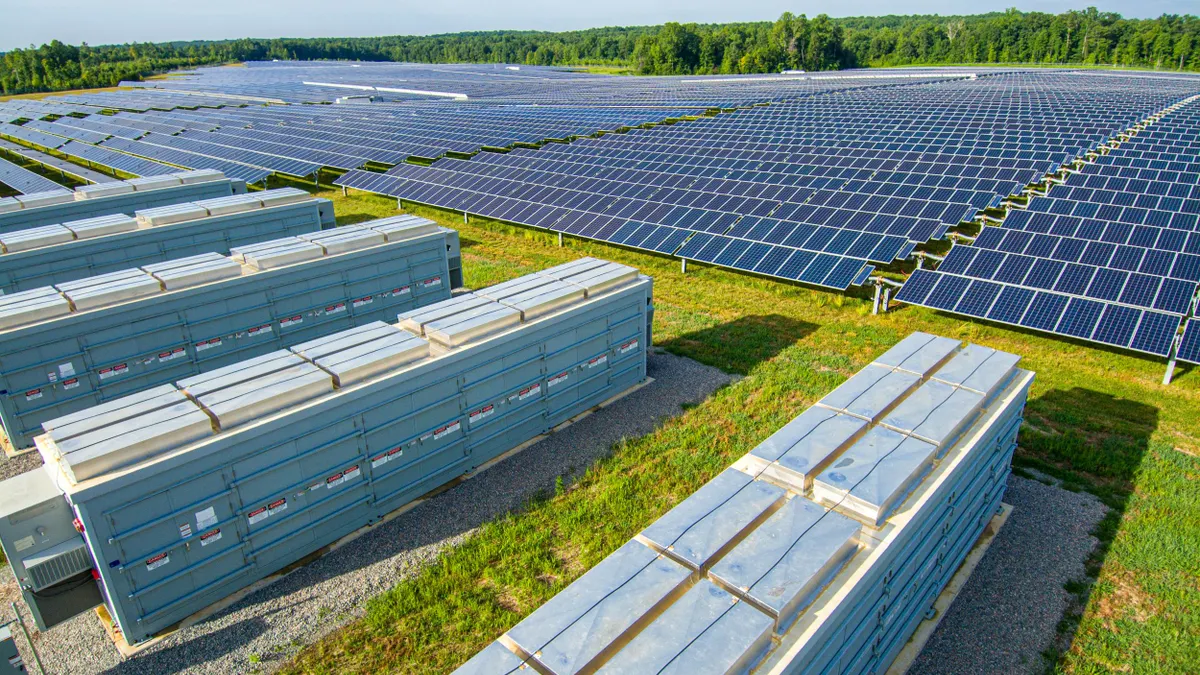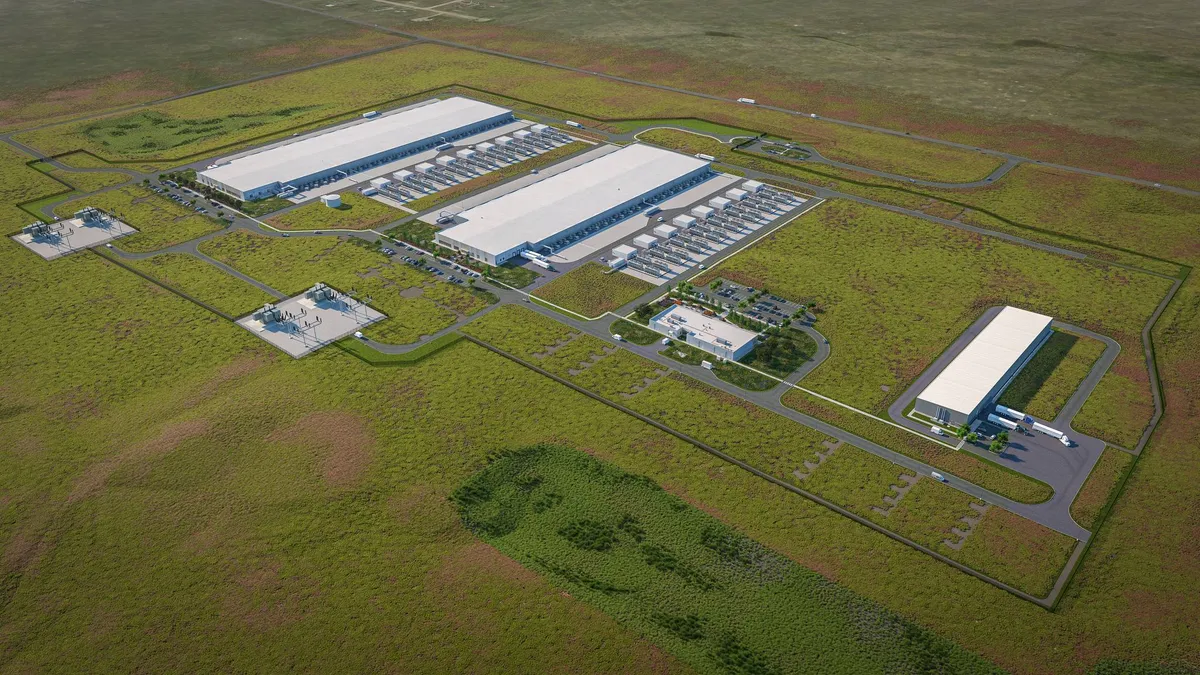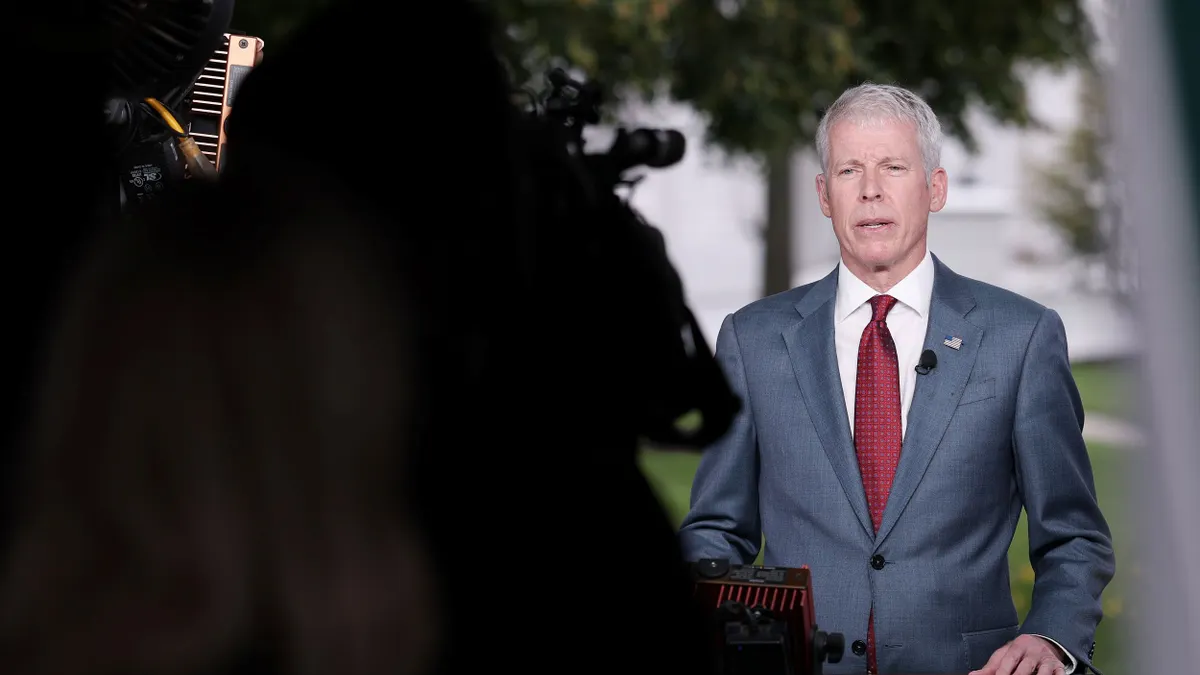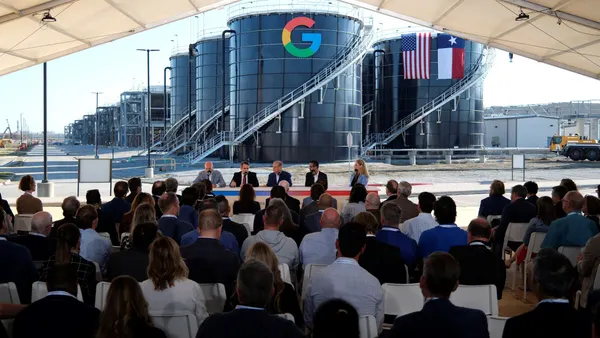Dive Brief:
- The PJM Interconnection needs 16 GW of energy storage by 2032, 23 GW by 2040 and 43 GW by 2045 to meet resource adequacy needs and state clean energy goals, the U.S. Energy Storage Coalition said Thursday.
- The new industry association’s “Outlook for Energy Storage in PJM,” prepared by Brattle Group, said PJM needs more energy storage to address short-term resource needs amid long waits for large gas turbines and an expected 19% increase in peak load by 2030.
- In an email, PJM spokesperson Dan Lockwood said his organization is committed to adding as much supply as possible in the near term, even beyond the 63 GW of projects in its queue as of June. “We need as many of those projects to come online as possible, along with much more new supply,” he said.
Dive Insight:
In modeling PJM energy storage demand out to 2045, Brattle assumed that the system operator will integrate at least 17 GW of new gas generation by 2032 and delay most planned thermal generator retirements until the mid-2030s.
It also assumed that all expected load in PJM’s Long-Term Load Forecast report will materialize. That would boost the grid’s summer peak by 16 GW in 2028 and 30 GW in 2032.
Under those assumptions, Brattle said adequate energy storage deployment could help PJM avoid up to 15 GW of load shed during extreme cold snaps and other “challenging system conditions.” Four-hour storage is the most cost-effective duration to complement PJM’s growing share of renewable generation while maintaining resource adequacy, it added, but stressed that PJM needs to add significant amounts of new gas generation and retain “conventional firm resources” other than storage into the 2040s.
If PJM adds new gas generation more slowly than expected, it will need to compensate by adding even more energy storage than projected, Brattle warned. Without adequate storage reserves, customer costs could increase 30%, due almost entirely to higher capacity prices.
Building out adequate storage to keep pace with an expected 3.5% annual increase in demand through 2032 will be challenging amid global trade uncertainty, the years-long gas turbine backlog, supply constraints for onshore wind components and PJM’s lengthy interconnection queue, Brattle said.
Though most of those factors are outside the grid operator’s control, the report warned that “interconnection queue reform is necessary … to create more opportunity for storage and other dispatchable resources to come online faster.”
PJM says it will process its remaining queue capacity in 2025 and 2026 before transitioning to the first cycle of its reformed interconnection process, which took effect in July 2023. It expects the new process will take one to two years to evaluate projects, faster than recent U.S. averages for interconnection studies.
A separate PJM process to fast-track shovel-ready dispatchable generation resources attracted nearly 12 GW earlier this year. Gas accounted for 69% of the total, with batteries and nuclear accounting for 19% and 12%, respectively.
“PJM has been clear that load growth cannot be met by the projects in the queue alone, given the speed of the forecasted demand increases,” Lockwood said.
The grid operator and its stakeholders “are exploring a number of [other] interconnection methods that could run parallel” to its new interconnection process, such as a recently-approved change that could allow energy-only resources to connect to the grid before required network upgrades are completed, he added.
Still, rapidly rising capacity prices are already pushing retail rates higher in some PJM states.
Democratic Pennsylvania Gov. Josh Shapiro and Republican Virginia Gov. Glenn Youngkin said in September that they were prepared to leave the organization unless it gave states greater say in its governance.
PJM executives, for their part, say its 13 member states must do more to encourage energy development within their borders. Last month, outgoing PJM President and CEO Manu Asthana called on them to remove siting and permitting barriers for new generators.
Asthana did not single out specific states or generator types, and Lockwood emphasized in his email that “we need energy in all its forms to maintain reliability.”
But energy developers have been frustrated in recent years by laws like a 2021 Ohio statute that gives local permitting authorities more influence to kill utility-scale wind and solar projects. The law has kept at least 2 GW of solar from connecting to the grid in the third most populous PJM state, according to the Tribune News Service.














